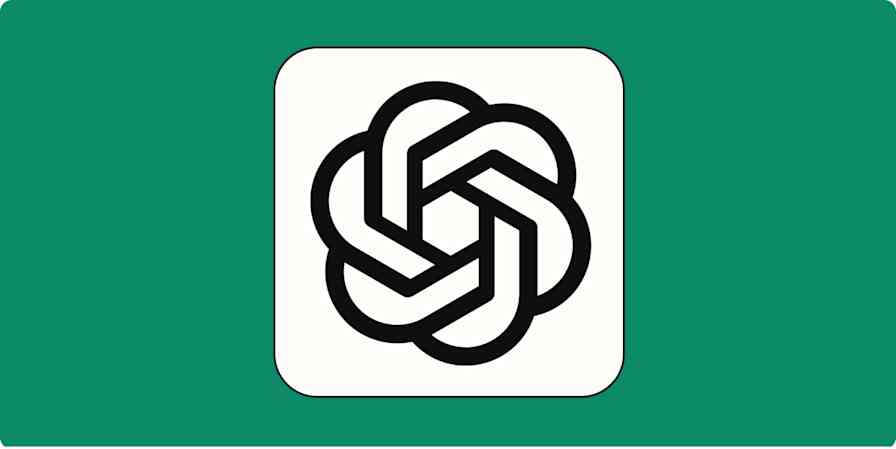Large language models (LLMs) have been able to extract, classify, summarize, and write for us for quite some time. They just couldn't execute those tasks on their own. Or not without some seriously cumbersome technical upkeep, anyway.
That is, until November 2024, when Anthropic released a little something called the Model Context Protocol (MCP). It's essentially a translator between AI tools and apps, so your AI can more easily take actions on your behalf.
Before, developers needed to build complex integrations for every app they wanted AI to interact with. But now, you can fast-track that process with Zapier MCP—a gateway to Zapier's massive library of thousands of pre-built app connections and actions.
Zapier MCP is currently available in beta and free to use.
Table of contents
While Zapier MCP is a great option for developers, technical experience isn't required. If you have little to no coding knowledge, we recommend connecting Zapier MCP with Claude. Or, for another non-technical option, try Zapier Agents. Learn more about all the options.
What is Zapier MCP?
MCP is a standard, a protocol. It injects your AI with a menu of apps and actions that you choose—like sending a DM in Slack or drafting an email in Outlook—then, at your command, it calls those tools for you.
Again, you'd normally have to build an integration for every app you want in your AI assistant. But over the years here at Zapier, we've built a massive library of thousands of app connections and 30,000+ actions, which you can use in your MCP.
The menu customization built into Zapier MCP reminds me of action role-playing video games (stick with me here). In these games, you can equip your main character with gear that complements your playstyle or the quest at hand. Similarly, with Zapier MCP, you choose which actions to "equip" based on your workflows and security needs.
Zapier MCP is free to use, though we do have some rate limits: 80 tool calls per hour, 160 per day, and 300 per month. If you want additional actions beyond these limits, you can sign up for our waitlist.
If you're on an Enterprise plan, Zapier MCP won't support app and action restrictions that might exist on your account. To request access to Zapier MCP, contact us here.
Key features of Zapier MCP include:
Nearly 8,000 app connections: Connect your AI to thousands of apps in our library—without having to build or maintain integrations.
Code-free setup: If you're not a developer, no problem. Easily connect Zapier MCP to Claude in minutes without coding or technical setup and then perform actions using natural language commands.
Flexible developer setup: For greater control, connect Zapier MCP with OpenAI's Responses API, Anthropic's Messages API, or developer tools like Cursor, Windsurf, Python, and TypeScript.
Action naming: Assign each action a meaningful name, so you can easily call it in your AI tool. (This is important if you want to create multiple actions that are similar but have different values—for example, separate actions for DMing your boss and DMing your direct reports.)
AI suggestions: To save time while setting up actions, skip entering every detail and let AI suggest values for fields.
On/off toggles: Quickly disable access to an action on your MCP page without deleting it, so you can enable it later while keeping all your pre-established settings.
Built-in security: Zapier MCP endpoints come with robust authentication, encryption, and rate limiting to prevent abuse.
Zapier MCP vs Zapier Agents: What's the difference?
Both Zapier MCP and Zapier Agents enable AI to take action in your apps, but they serve different needs.
If you want simplicity, choose Zapier Agents
Zapier Agents are AI teammates that you can easily train to work across thousands of apps—all without code. They come with a user-friendly interface and prompt assistants and can handle multi-step tasks that run automatically in the background.
If you don't code and work primarily in Claude
Zapier MCP integrates directly with Claude, and you don't need technical skills to set the connection up. It's ideal for folks who frequently work in Claude and want to avoid switching in and out of the app. Just describe what you need in natural language, and Claude will carry out actions for you right in the chat interface, one request at a time.
If you're building custom solutions
Developers and technical builders can connect Zapier MCP to OpenAI's Responses API, Anthropic's Messages API, and developer tools like Cursor, Windsurf, Python, or TypeScript. These connections give you more control over AI tool calls, how your AI responds, and what context it works within—great for building custom solutions, like in-app assistants and advanced chatbots.
Use this option | If you want... |
|---|---|
Zapier Agents | A no-code AI assistant that can perform multi-step workflows and run in the background |
Zapier MCP with Claude | A no-code experience where you can conduct one-off actions inside Claude to reduce context switching |
Zapier MCP with APIs or developer tools | Full control and expanded AI capabilities, great for building customized solutions |
What you can do with Zapier MCP
Here's a taste of what AI can do on your behalf with Zapier MCP:
You want to find, add, or update specific rows inside your PostgreSQL database.
You manage a Circle community and want AI to write and send a message to all your members reminding them of today's call.
You want to create a calendar event and have AI write and send an email invite with context about the meeting.
You need a quick summary of a website, so you ask AI (through Web Parser by Zapier) to extract the page content and DM you the highlights on Slack.
You're developing an AI travel assistant that lets customers plan trips entirely through chat. With MCP, when a user asks "Book me a window seat on the next flight to Chicago and add it to my calendar," your assistant can search flights, make the booking, add the event to their calendar, and confirm completion—all without the user ever leaving the conversation.
So long as you've activated the relevant actions in your MCP, all you do is dictate these requests to your AI, and poof. Wish granted.
But here's the part I find bananas: For AI tools with speech recognition, you can just speak these directives to your AI and watch it work for you. Creating your own customized voice assistant has never been easier.
How to get started with Zapier MCP
Let's start with the non-technical option: connecting Zapier MCP to Claude.
1. Log in to Zapier and head to the Zapier MCP dashboard.
2. Click + New MCP Server and choose Claude as the MCP client. You can give your server a name or just go with the default suggestion. Then click Create MCP Server.

3. Setting up your first action is easy—just click + Add tool. In the text field, type the name of an app, and from the list of available actions, pick the action you want to perform in Claude.

4. Now connect your app account. You'll be taken to a new screen asking if you authorize Zapier to access your account. Click Allow, then Save.
5. Fill out any mandatory or optional fields that appear based on your selected action. You can even let AI assign a value for certain fields. When you're finished, click Save. Repeat this process for as many actions as you'd like.
6. After you've added all your desired actions, click the Connect tab at the top of the Zapier MCP dashboard.
7. Click Copy URL to snag the integration URL for the MCP server. (You'll use this URL in a few steps.)

8. Now, open Claude.ai in your browser and log in.
9. Click your initials in the bottom-left corner of the screen and select Settings.
10. Under Integrations, click Add more.
11. In the pop-up, name your server (I recommend "Zapier MCP" for simplicity's sake) and paste the integration URL.
If you're on a Claude Team or Enterprise plan, you'll need someone with Owner permissions to add the Zapier MCP to your account.
12. Check the box to accept the security notice and click Add.

13. Now start a new conversation in Claude. Click the search and tools icon. At the bottom of the modal, you'll see a tool by the name of your MCP server. Click Connect.

14. Next, you'll be redirected to a screen where you can approve the connection between your server and Claude. Click Allow.
15. Use the toggle buttons to enable or disable actions that Claude can access.

16. You're all set! Just type your request, and watch Claude magically execute the action for you.
To connect Zapier MCP to other clients, read more about the Responses API and Messages API—and for general setup, visit our help center documentation.
Let your AI interact with thousands of apps securely
Before MCP, hooking AI up to an external app was brittle and hard to scale—and inaccessible to non-technical users. Now, with a standardized bridge between AI and real-world apps, there's a universal remote control to perform any of the thousands of actions in the Zapier ecosystem.
The clicker is in your hands. Start getting work done with Zapier MCP today.
This article was originally published in April 2025. It was most recently updated in June 2025.









